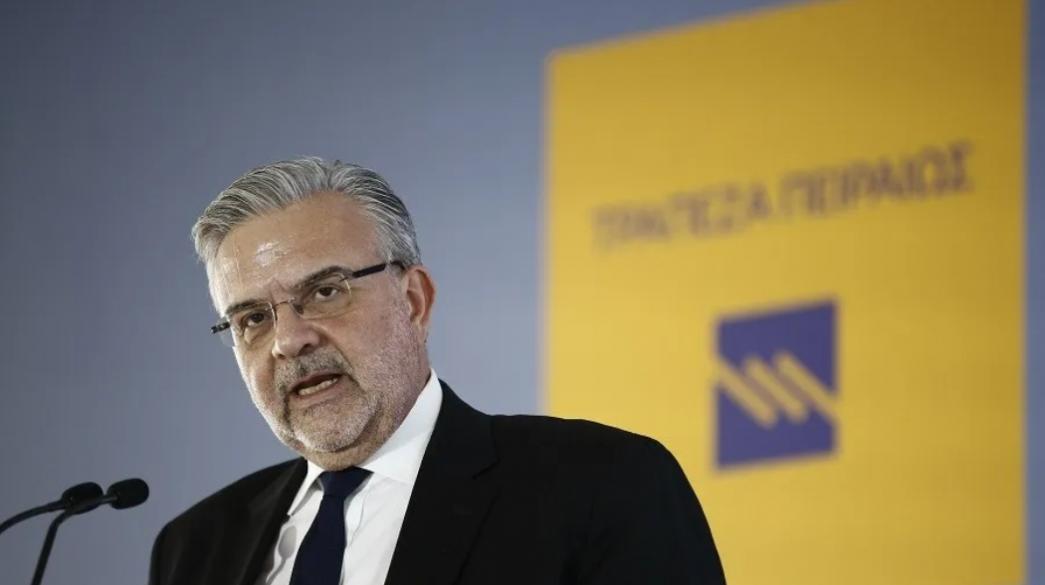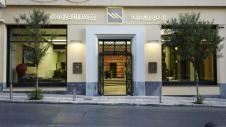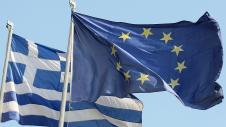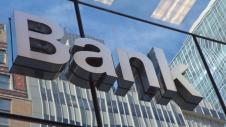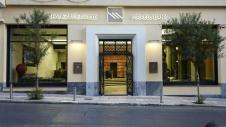The management's plan for "Piraeus Bank of the New Era" envisages a more than doubling of revenues - profitability, with a diversification of revenue sources and emphasis on asset management, bancassurance, and real estate, targeted credit expansion in extroverted and dynamic sectors of the economy, significant reduction of operating expenses, double-digit return on equity and emphasis on technology with the development of a new digital bank.
As Piraeus Bank CEO Christos Megalou noted, speaking to reporters yesterday on the occasion of the new business plan for the 5-year period 2022 - 2025, "Piraeus Bank has now entered the next era. In the last 5 years we have worked very hard to reduce non-performing loans, improve the quality of capital, improve our own capital and create new capital to be able to complete the consolidation of our balance sheet. Now with 2021 as a starting point and looking ahead to 2022, we can look to the future with optimism and think about what value we can create for the bank, for our shareholders, for the Greek economy and for society."
The central objective of the plan is to achieve strong recurring profitability and distribute dividends to shareholders. With a starting point of a 3% return on equity in 2021 corresponding to a profit of EUR 200 million (this is profit calculated by deducting balance sheet clean-up costs, deducting various non-recurring income, deducting interest income from the de-recognition of NPEs, etc.), the bank aims to achieve profitability of EUR 700 million and a return on equity of 12% in 2025.
The restoration of profitability, through diversified recurring revenue sources, will allow the distribution of a dividend for the 2025 financial year, with a target of 35% of net profit. However, there is a possibility that a dividend distribution of a lower percentage could be achieved from fiscal 2023 onwards in line with general developments. The bank's ambition, as emphasised, is that the dividend distribution will be made for the 2023 financial year.
According to Theodoros Gnardellis, CFO of Piraeus Group, the achievement of the profitability target will be based on 3 pillars: growth in fee and commission income, credit expansion - interest income growth and reduction of operating costs.
In detail:
- Operating cost reduction. It will contribute 3 percentage points to the target to increase return on equity from 3% today to 12%. Cost reduction will have the most immediate positive impact on results as there is significant scope for further reduction of the group's branch network and staff. The business plan envisages a reduction in operating costs from around EUR 900 million today to EUR 700 million in 2025. The number of employees will be reduced to 6,000 in Greece from 9,000 today. It is noted that in 2022 the return on equity is estimated to be close to 6%, improvement based on operating cost cuts.
- Commission revenue. An additional 3 percentage points in the return on equity target increase is expected to come from fee income with a focus on asset management, bancassurance and real estate. The development of asset management is central to the bank's planning with the aim of increasing assets under management from 6 billion today to 12 billion in 2025. The bank announced a few days ago the acquisition of Iolcus Investments, an acquisition that directly boosts assets under management by 1 billion. Note that the bank already has a very strong position in bancassurance while the domestic market is far behind the EU and there is great scope for growth. The bank also expects significant revenues from the real estate segment with the value of the properties on its balance sheet amounting to EUR 3.2 billion. The aim is through the Terra transaction to de-recognise EUR 800 million worth of properties. An additional EUR 500 million worth of properties will be sold organically in the coming years. Significant investments are also planned in Trastor with the aim of doubling the property portfolio from EUR 300 million today to EUR 600 million. The business plan foresees net fee and commission income to rise from a level of EUR 400 million to around EUR 530 million in 2025, an increase of +32.5%.
- Credit Expansion - Interest Income. Three percentage points in return on equity growth will come from credit expansion and interest income growth. The bank forecasts new loan disbursements of EUR 4.4 billion in 2022, EUR 4.4 billion in 2023, EUR 4.5 billion in 2024 and EUR 4.7 billion in 2025 of which disbursements under the RRF will be around EUR 300 million per annum (with this amount reaching EUR 400 million in 2025). Emphasis will be placed on the manufacturing, tourism, energy and construction sectors, which are the most dynamic and outward-looking sectors of the domestic economy, while these are also the most efficient sectors for the bank. According to the business plan, the portfolio of non-performing loans will increase from EUR 27,5 billion today to EUR 35 billion in 2025.
The cost of risk, i.e. the reduction in provisions, will make a small contribution to boosting profitability as it is already incorporated in the results.
Balance sheet clean-up with 3 billion
As Mr. Megalou stressed, the turnaround became possible after the heavy legacy of the crisis and the large stock of non-performing loans had been addressed. He noted that 2021 was a truly significant year for the bank as it managed directly, through the capital increase (of EUR 1.4 billion), but also indirectly through various actions, to strengthen its capital by a total of EUR 3 billion, which allowed them to manage so quickly and to such an extent to reduce NPLs, consolidating its balance sheet. In total, the bank has made available EUR 3.9 billion of capital for the consolidation of the balance sheet.
It is noteworthy that at the end of 2021 the NPEs ratio stood at 13% from 45% a year earlier, while the target for 2022 is to reduce the ratio to 9% and then gradually approach 5%, with the ultimate goal of shrinking to 3% by the end of 2025. It is noted that of the stock of NPEs at the end of 2021, amounting to EUR 4.9 billion, a large part shows high chances of recoverability as around EUR 400 million relate to loans guaranteed by the Greek government, while loans amounting to EUR 1.9 billion are non-canceled of which EUR 1.3 billion are being repaid and expectations are well-founded that many of them will be "cured" organically and in 2023 will be deconsolidated from NPEs.
The bank aims to reduce the stock of EUR 4.9 billion of NPEs to around EUR 3.5 billion in 2022 through securitizations of EUR 900 million (these are the Sunrise III and Solar transactions) under the Hercules Plan and other actions.
Τhe new digital bank
High expectations and targets have been set for the new digital bank. As the group's CEO Christos Megalou noted, "the bank has been monitoring this market for a long time and we have started the processes to create a new digital bank, which will have a banking license, will not have any branches and will offer consumers (mainly young people) "buy now pay later" services, will provide merchants and others with the possibility of providing their own financial services to their customers and the whole range of consumer products. In a second year and after we get the license we will attempt to move 1 million customers who basically do not use bank branches (millennials, generation Z) to the new digital platform. The ultimate goal is to export this model across Europe."
Megalou noted that the new digital bank will help the bank to reduce the cost of servicing its customers while creating opportunities for cross-selling.
It was noted that the development of the digital platform will be done through Natech a high-tech company based in Ioannina with which the bank has entered into a strategic joint venture. "Our goal is through the partnership to create a digital platform with European ambitions and perspective," he noted.
The total investment for the development of Bank Tech will reach 40 million euros. The initial estimate is for revenues of more than EUR 50 million through the new digital platform in 2025.
Optimism for the economy, indirect effects of the international crisis
Mr. Megalou appeared optimistic about the economy, despite the turbulence created by the new crisis in Ukraine. As he noted, spearheaded by the very good performance of tourism - the bank estimates that tourism revenues this year will reach the levels of 2019 - the economy will remain on a strong growth path. It is estimated that in 2022 GDP growth will be in the range of 3% to 4%. In terms of inflation, inflationary pressures are projected to gradually level off from the second half of the year with average inflation in 2022 expected to be 7%.
Regarding the war in Ukraine and the impact on the banking system, he noted that this will be limited and not immediate. He noted that the first quarter ended very positively for the bank with no impact on the rate of credit expansion or the creation of new "red" loans. In any case, he stressed, and provided that developments do not deteriorate, it is not expected, even in the negative scenario where the war is prolonged for many months, that there will be any serious impact on banks.
The presentation of the bank's new plan was also attended by the General Manager of Business Planning, Investor Relations and ESG, Chrysanthi Barbeti.


